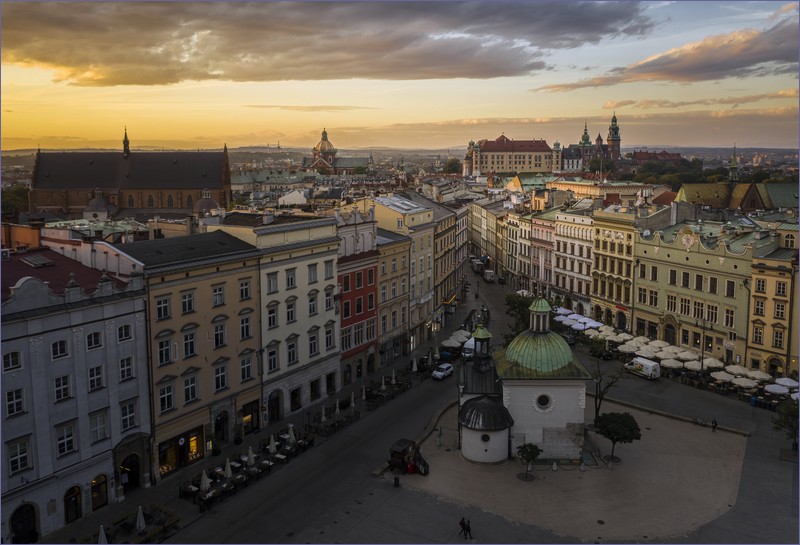Warsaw is the capital of Poland and the country’s largest city – famous for meticulously reconstructed Old Town and Royal Castle. Warsaw is a largest railway junction in the country. The capital has a very good railway connection with most of the large cities in the country. If you want to plan day trips from Warsaw by train – there are only a few noteworthy tourist attractions for foreigners in region reached by regional trains.
Many attractions in Masovia region are not accessible by train, so The final chapter of the article is dedicated to suggestions for day trips from Warsaw by long-distance trains operated by PKP Intercity.
Main railway station in Warsaw is Warszawa Centralna for long-distance trains. Regional trains stop at adjacent Warszawa Śródmieście (Warsaw Downtown) railway station. Both stations are located in the city centre.
Day trips from Warsaw by train – direction Lodz
The Warsaw – Lodz route is the most important one for travelers planning a day trip by train from Warsaw. Along the way, you’ll find architectural gems of railway stations and interesting, though still relatively little-known, places worth visiting. Between Warsaw and Lodz currently operate two regional carriers Polregio and Lodzka Kolej Aglomeracyjna (ŁKA) and long-distance operator PKP Intercity. On the stretch Warsaw – Skierniewice operates also Koleje Mazowieckie (KM)
Rogów (optional) – a modest station, well known to railway enthusiasts for the Rogów Narrow-Gauge Railway and the exhibition of narrow-gauge and standard-gauge rolling stock at the nearby freight station. During the spring-to-autumn season, narrow-gauge trains operate on weekends, transporting tourists on the short Rogów–Jeżów route (7 km), where bonfire sausage roasts are organized. In the future, the line might be renovated to restore service to Rawa Mazowiecka and further to Biała Rawska (currently, the Jeżów–Rawa Mazowiecka section is impassable).
Skierniewice (optional) – a town associated with the Festival of Flowers, Fruits, and Vegetables. It has also a beautiful railway station. The main drawback is that the most interesting sites are spread out, requiring quite a bit of walking. The Skierniewice train station is undoubtedly one of the most beautiful in Europe. On platform 1, there’s a statue of Wokulski, and the interior is also impressive. Worth seeing is the palace-park complex with the Primates’ Park. The palace belongs to the Warsaw University of Life Sciences and is open to the public only on select days, usually once a month. The well-kept park is open daily. The town square is rather plain and paved over, but plans are underway to restore greenery to the main plaza. You can end your visit at the Museum of Skierniewice History, a small but worthwhile institution that opened in 2018. While walking through the town, you’ll also encounter religious landmarks, historic villas, and other eye-catching buildings mixed in with communist-era blocks of varying shapes and purposes.
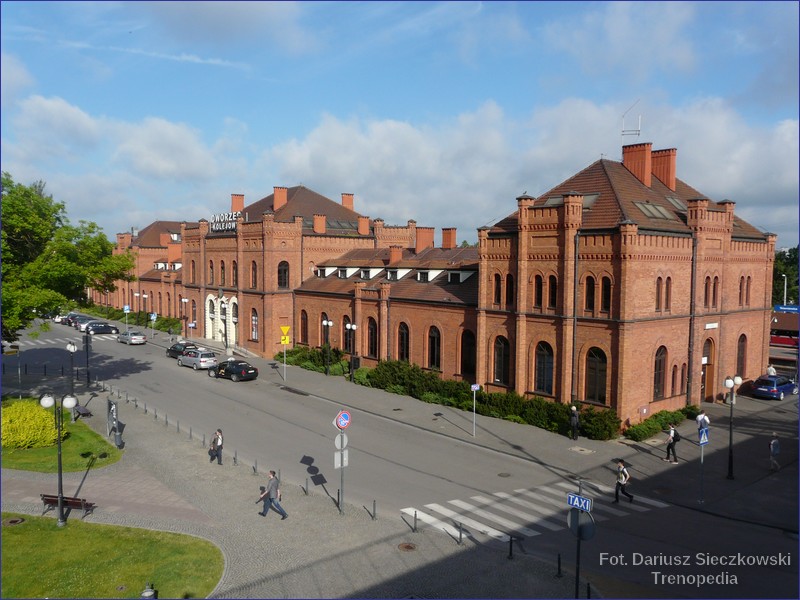
Żyrardów – a former industrial town with a well-preserved 19th-century factory settlement and revitalized post-industrial buildings, factory owners’ villas, and workers’ housing. The heart of the city is John Paul II Square, dominated by the Neo-Gothic Church of Our Lady of Consolation (1900–1903), whose towers rise above the city. From the beautiful historic railway station, it’s a 10–15 minute walk to the city center, where most attractions are located. In Żyrardów, be sure to visit two museums: the Museum of Western Mazovia, located in the Dittrich Villa (the former residence of a Jewish factory owner), and the Linen Industry Museum, dedicated to linen production and featuring working weaving machines. Some parts of the town still need revitalization, and a strong sense of insecurity has been reported in certain areas.
Łódź – once an industrial city largely overlooked by tourists and infamously associated with crumbling tenement houses, ruined factories, and petty crime – has undergone a dramatic transformation in the past fifteen years. Thanks to significant investments in revitalizing industrial areas and renovating historic buildings, Łódź now has a great deal to offer visitors with diverse interests. Especially impressed will be fans of technology and art, as the revitalized factory complexes leave a lasting impression on both domestic and international guests.
The best place to get off the train is at Łódź Fabryczna station. Right next to it, on the site of the city’s first power plant, lies the EC1 complex – one of the most spectacular revitalization projects in Łódź. Futuristic frameworks wrap around historical buildings, housing the EC1 Science and Technology Center, which includes a spherical 3D cinema, three educational paths, the “Street of Elements,” a planetarium, and the National Center for Film Culture. A viewing point atop the cooling tower chimney offers panoramic views of the city.
In the city center, Poland’s longest pedestrian street, Piotrkowska Street, never fails to impress. Along this street, be sure to check out the murals, visit the Museum of the History of Pharmacy, the Central Museum of Textiles, and the Łódź Urban Culture Park – a small open-air museum in the city center.
A must-visit in Łódź is Manufaktura – a cultural, entertainment, and shopping center located in renovated industrial buildings. Besides shops and cafés, the complex houses the Experymentarium, an interactive science center that explains the principles of science and technology. Next door, you can visit the Museum of the City of Łódź in the Poznański Palace – the largest factory owner’s residence in Poland, built by Izrael Poznański. In another palace, once belonging to his son, is the Museum of Art.
During a one-day trip, it’s also worth seeing the Księży Młyn heritage residential complex, complete with a restored section of railway siding. The estate, established in 1875 and expanded in later years, consists of workers’ family homes known as “famuły,” similar to the “familoki” of Upper Silesia. Some buildings have been revitalized for commercial and culinary purposes, while others remain residential. You can end your day in Łódź by visiting the Jewish cemetery, the Museum of Art’s branch in the Herbst Palace, or the zoo featuring the widely promoted Orientarium.
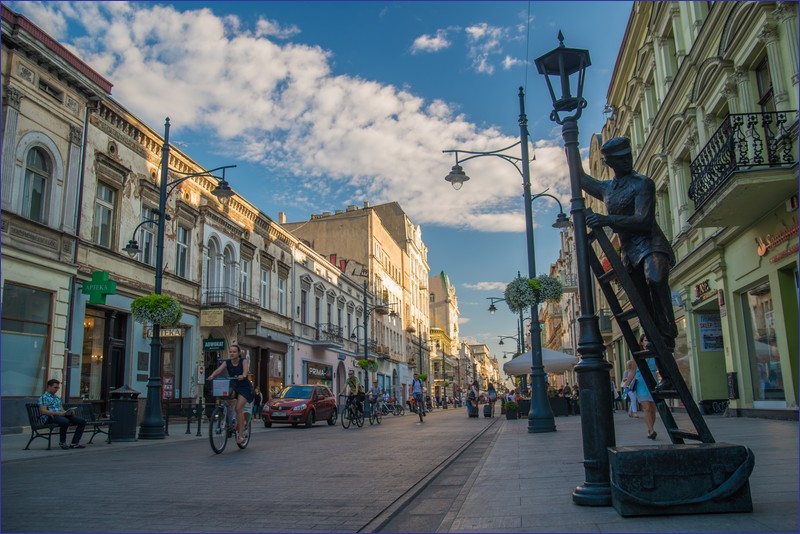
Direction Łowicz
When planning train trips from Warsaw, it’s worth visiting Łowicz. The route goes through Zgierz and Głowno—it’s fast and pleasant, although frequent line closures can be a problem. There are also interesting places to see near Łowicz.
Łowicz – a small, pleasant town, perfect for a day trip or as a base for exploring the area. It takes just five minutes to walk from the train station to the town center, passing a beautiful Polish Post Office building along the way. The town has two squares (one of which is triangular), several notable religious landmarks (the most famous being the Cathedral Basilica of the Assumption of the Blessed Virgin Mary and St. Nicholas), and it’s worth stopping by the Museum in Łowicz. In the past, the town was known for its delicious kebabs—though it’s unclear what the current offerings are like.
In nearby Maurzyce, the Łowicz Village Open-Air Museum (Skansen Wsi Łowickiej) is worth visiting. However, it’s unclear how to get there using public transportation from Łowicz. The closest train stop is Niedźwiadka Łowicka.
Sochaczew isn’t particularly notable for its architecture, but it’s definitely worth a visit to see the Narrow-Gauge Railway Museum, which houses one of the largest collections of narrow-gauge rolling stock in Europe. This branch of Warsaw’s Stacja Muzeum also operates retro trains along the narrow-gauge line during the summer season. While in town, you can also visit the Museum of the Sochaczew Region and the Battlefield of the Bzura River.
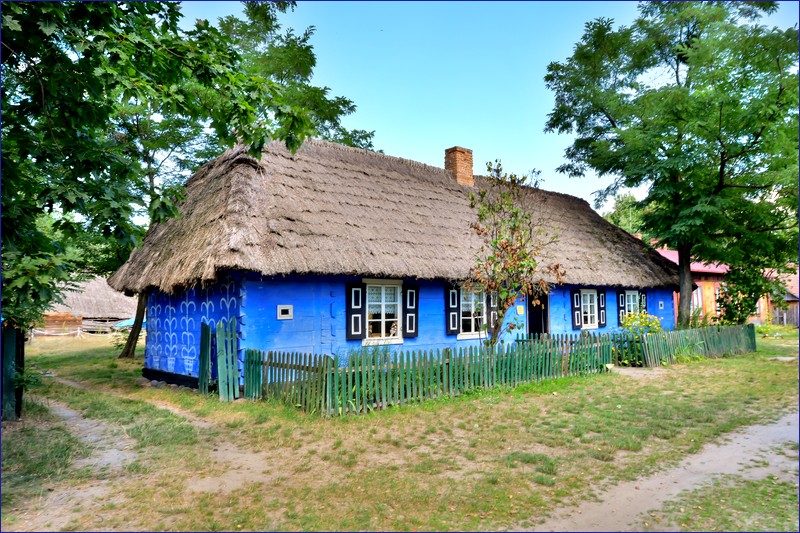
Direction Dęblin
Travelers taking regional trains toward Dęblin will come across two interesting places, in my opinion.
Otwock – a former health resort. The town still features wooden buildings in the “Świdermajer” architectural style scattered across various neighborhoods. Railway enthusiasts might be interested in the building of the former narrow-gauge railway station. Urban exploration fans are drawn to the ruins of the “Zofiówka” psychiatric hospital.
“Całowanie” Marshes (optional) – a few kilometers from the Celestynów railway station, an interesting educational trail has been created along a wooden boardwalk over the marshes in the village of Całowanie. During the walk, with a bit of luck, you can observe many animals in their natural habitat. It’s a great place for a walk and to escape the hustle and bustle of the big city—provided it’s not too crowded.
Direction Ciechanów
Modlin – an abandoned impressive fortress. It is a must-see destination but I can’t provide verified information about visiting this place.
Ciechanów – the most well-known landmark of Ciechanów is the Castle of the Dukes of Mazovia, located quite a distance from the railway station. The castle houses a branch of the Regional Museum, with several exhibition rooms, the castle walls, and a tower open to visitors. Other notable landmarks include the Town Hall, the Church of the Nativity of the Blessed Virgin Mary, and a former workers’ colony. The “Łydynia River Valley” landscape park is also a popular destination. A few kilometers outside Ciechanów, you can visit the Museum of Romanticism, located in a palace in Opinogóra.
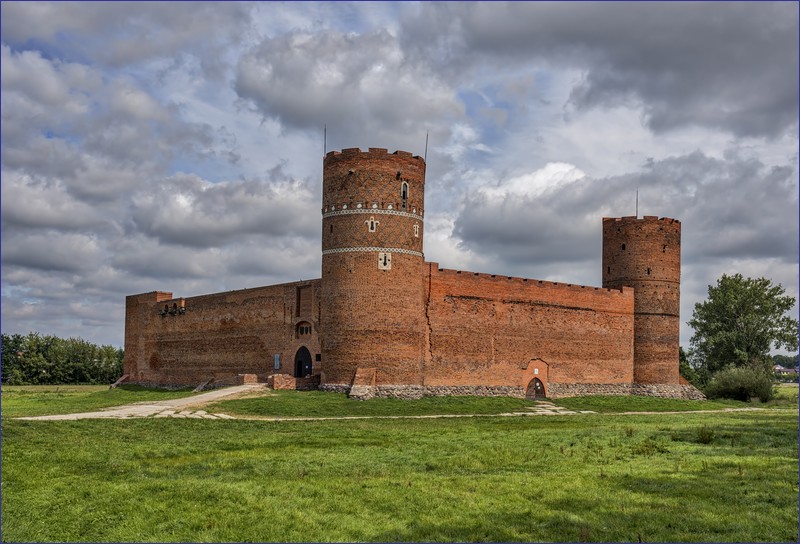
Direction Radom
Koleje Mazowieckie (Mazovian Railways) and PKP Intercity trains also run toward Radom via Piaseczno. While it may not be the most exciting direction for a train trip from Warsaw, some tourist groups may still appreciate what Piaseczno and Radom have to offer.
Piaseczno (seasonal) – in the spring-to-autumn season, on weekends and select dates, it’s worth taking a ride on the Piaseczno–Grójec Narrow-Gauge Railway, which runs from Piaseczno to Tarczyn. Railway archaeology enthusiasts can enjoy walking along the former railway route to Grójec and beyond year-round.
Radom (optional) – an industrial city, sometimes listed among the least attractive cities in Poland. However, it features interesting architecture in the city center and several historic churches: Cathedral of the Virgin Mary’s Protection, St. Stanislaus Bishop’s Church, and St. John the Baptist’s Church. A trip to Radom could also include visits to the Museum of the History of Radom and the Jacek Malczewski Museum. Just a few kilometers from the city center lies the popular open-air museum Museum of the Radom Countryside.
Day trips from Warsaw by PKP Intercity trains:
Białystok – the capital of the Podlaskie Voivodeship and an important railway junction. From the windows of a train or bus, the city may appear quite unattractive, with endless rows of apartment blocks. The historic train station has been renovated and is connected by a footbridge over the tracks (not adapted for people with disabilities) to the also-renovated bus station. It takes about 15 minutes to walk from the station to the main square, passing St. Roch’s Basilica on the way.
The city’s landmark is the Branicki Palace, while other notable sights include the Town Hall (which houses the Podlaskie Museum) and the Minor Basilica of the Assumption of the Blessed Virgin Mary. Among modern buildings scattered across the city, you can still find historic architecture and interesting attractions. However, a full exploration of Białystok requires at least a weekend.
Lublin – the capital of the Lublin Voivodeship, is an excellent destination for both a day trip and a weekend getaway. The revitalized Old Town features numerous historical landmarks and charming cobbled streets. The railway station is located about 2 kilometers from the city center. The city is famous for its Renaissance architecture, and a rich multicultural heritage shaped by Polish, Jewish, and Eastern influences. Highlights include the Lublin Castle with its stunning Holy Trinity Chapel, the Crown Tribunal, and the Grodzka Gate, once a passage between Christian and Jewish quarters. The city is also home to vibrant cultural life, museums, and festivals.
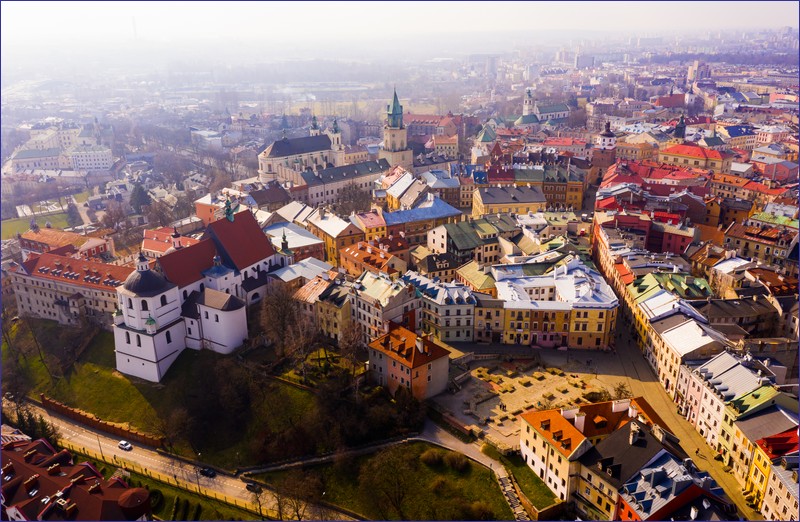
Kraków – the capital of the Lesser Poland Voivodeship – is considered one of the most beautiful cities in Europe. Most tourists limit their visit to the Old Town, Wawel Hill, and possibly the Kazimierz district. The Old Town is indeed very picturesque, as is Wawel Hill. Must-see attractions include the Barbican, the Juliusz Słowacki Theatre, St. Mary’s Basilica, and a walk along Floriańska and Grodzka Streets, followed by a visit to Wawel Castle, at least from the outside.
Kazimierz is a district known for its Jewish heritage, featuring synagogues and two historic Jewish cemeteries. However, it’s also worth visiting the Basilica of St. Michael the Archangel and St. Stanislaus with its crypt of notable Poles, the Museum of Municipal Engineering, and Wolnica Square with its old town hall and the visible Basilica of Corpus Christi.
Beyond Kazimierz, across the Father Bernatek Footbridge, lies the fascinating Podgórze district, with its own market square, St. Joseph’s Church, an old cemetery, a fort, and the small Church of St. Benedict. The district’s most famous landmarks are Krakus Mound and Oskar Schindler’s Enamel Factory.
By public transport, you can reach Nowa Huta – a former working-class district once infamous, now attracting visitors with its unique socialist realist architecture centered around Ronald Reagan Central Square. Other attractions in Nowa Huta include Wanda Mound, Nowa Huta Reservoir with brine graduation towers, the wooden Church of St. Bartholomew from 1466, and the nearby Cistercian Abbey.
Kraków and its surroundings are full of secular and religious monuments scattered throughout the city. Despite the tourist crowds and sometimes steep prices, Kraków is an essential destination.
Related articles:
Train travel in Poland – a comprehensive guide
Scenic railways in Poland
Narrow-gauge railways in Poland
